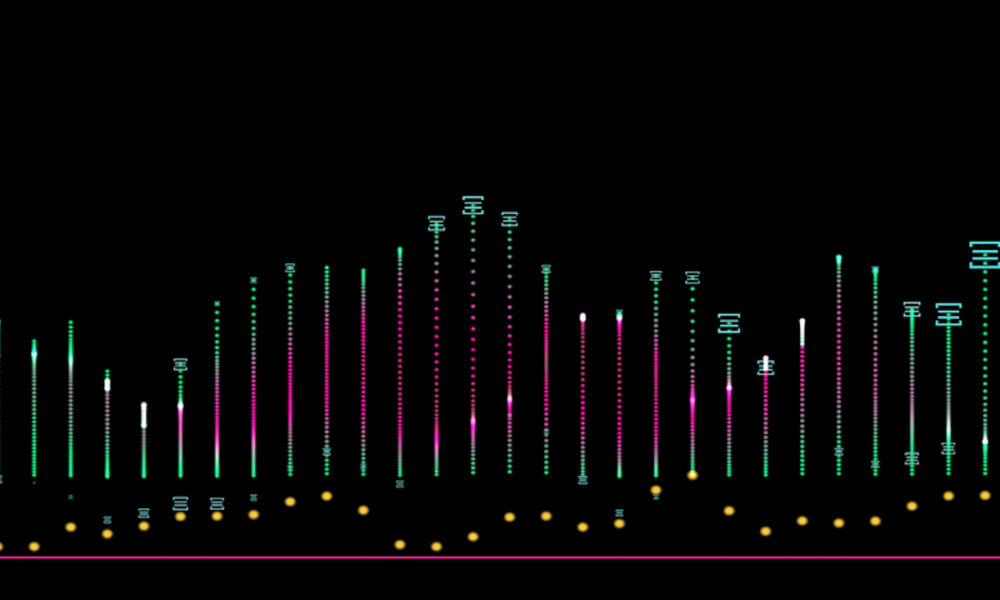The Bitcoin market spent the week caught between confidence and caution, and ETF flows captured that tension.
On Tuesday, Nov. 11, spot Bitcoin ETFs saw $524 million in inflows, their strongest single-day intake in over two weeks.
However, on Nov. 12, they saw $278 million in outflows. The sharp reversal was a snapshot of how closely these products track the mood of the broader rates market.
The flows reflect seasoned traders’ biggest fear: that rising long-term Treasury yields, driven by heavy supply and an uncertain CPI print, could tighten financial conditions and weigh on risk assets.”
Table showing the inflows and outflows for spot Bitcoin ETFs in the US from Oct. 27 to Nov. 12, 2025 (Source: Farside)After dipping toward $103,000 early in the week, the market lost support and fell toward $100,000 as traders paused ahead of the long-bond auction and today’s CPI release. The pullback was brief and shallow, but echoed the same hesitation seen among ETF desks.
The price has remained in a tight range since the October peak near $126,000. This week’s moves stayed within that band: strong when real yields eased, weaker when supply fears returned.
Tuesday’s surge in ETF inflows didn’t appear out of thin air. Treasury officials signaled that debt auctions would be adjusted gradually rather than expanded aggressively.
That was enough to lower the temperature in rates markets, with long-dated yields slipping and risk assets lifting. Bitcoin benefited from the reprieve.
Spot liquidity improved, ETF creations picked up, and the spread between ETF market prices and underlying NAV compressed. When borrowing costs stabilize, Bitcoin often trades as if a weight was lifted, and ETF flows tend to follow.
This changed Wednesday, as the market faced a crucial 30-year auction. Long-bond supply is a pressure point into 2025, influencing equity valuations and the dollar’s strength. Any dip in demand can quickly push yields higher.
ETF desks hesitated before the auction, leading to the $278 million outflow. Notable, but still within these funds’ normal activity.
These flows matter less as day-to-day portfolio signals and more as a guide to who is providing the marginal support for Bitcoin when volatility picks up. The spot ETF complex has become the dominant gateway for institutional buyers.
When creations swell, the market’s depth thickens, selloffs feel gentler, and prices can stabilize in places that would previously have cracked. When flows soften, even briefly, Bitcoin trades with less cushion.
This week’s discrepancy between inflows and outflows is a good example: Tuesday’s rush helped Bitcoin absorb early selling, while Wednesday’s pullback made the afternoon drift lower feel heavier.
CPI (Consumer Price Index, a key inflation measure) added another layer of anticipation. Inflation data now acts as a pivot for positioning across all major risk assets.
If today’s print comes in cooler than forecast, real yields (inflation-adjusted interest rates) typically decline, and ETF flows often improve as allocators shift back into risk-on mode. A hotter print usually pulls flows the other way.
For the average holder, it determines whether Bitcoin feels supported by large institutional hands or left to trade on thinner liquidity.
These shifts don’t imply a directional verdict for Bitcoin, and the price action this week made that clear.
Even with Wednesday’s ETF outflows, Bitcoin stayed just north of $100,000, a level that has become a kind of psychological midpoint for traders. Spot markets continued to show steady buying interest from Asia and the U.S., and derivatives markets remained orderly.
What changed wasn’t sentiment in a broad sense, but the willingness of large allocators to press bets ahead of data that could nudge yields in either direction.
This is why it’s important to track ETF flows, even for long-term holders. They offer the fastest read on when institutions feel comfortable stepping into Bitcoin and when they prefer to sit on their hands.
They reflect how trillions of dollars of traditional capital process each signal from Washington, from inflation prints to Treasury supply plans. They answer a simple question: Is the system leaning toward taking risks, or retreating from them?
This week’s pattern, from half a billion in creations to a $278 million bleed, shows calibration. Markets were waiting for clarity on inflation and long-term funding costs.
Bitcoin moved within its now-familiar $100,000 to $105,000 channel, remaining steady when yields softened and increasing when they edged higher. ETF flows mirrored that arc almost perfectly.
For traders and investors, this is the real value of watching the ETF tape. It’s about understanding whether Bitcoin is being carried by institutional demand or navigating macro currents without much help.
In a year when everything from tech earnings to Treasury refunding shapes risk-taking appetite, those flows have become the clearest signal of how Bitcoin fits into the broader market.
Source: https://cryptoslate.com/bitcoin-etfs-swing-by-800m-in-24-hours-as-traders-brace-for-cpi-shock/


